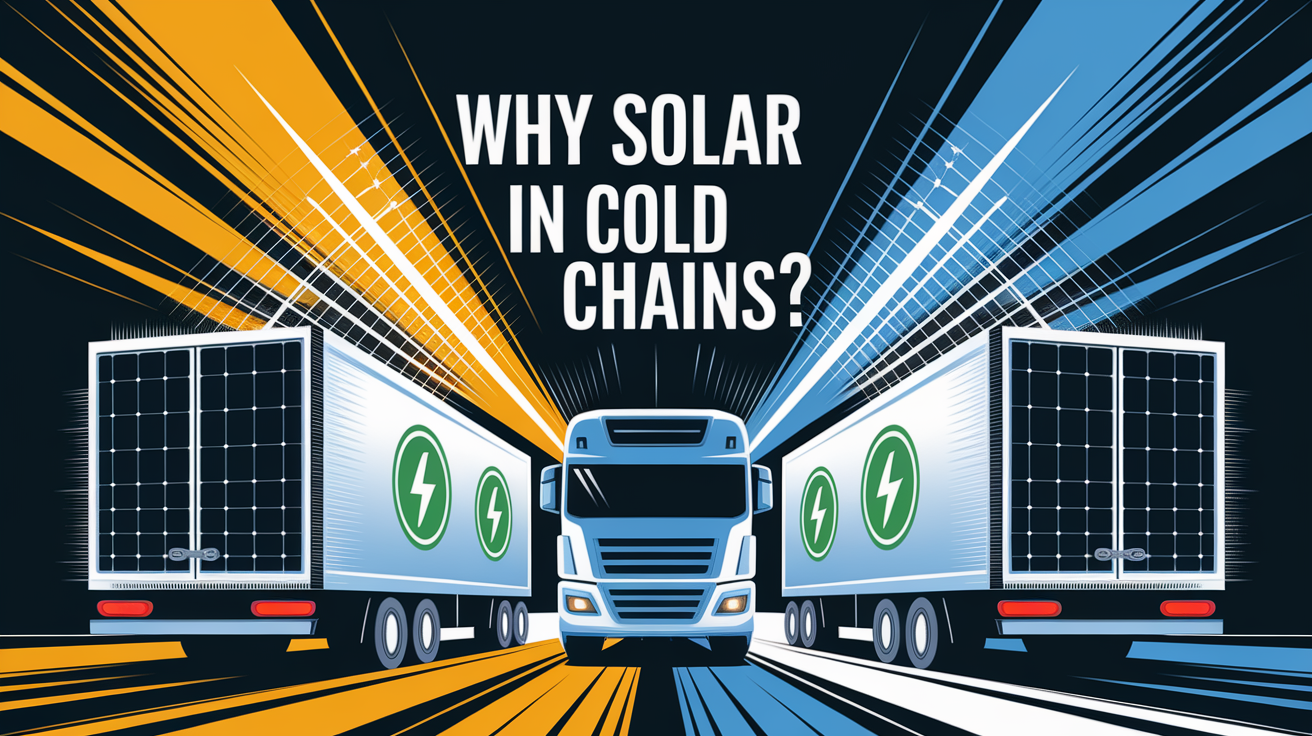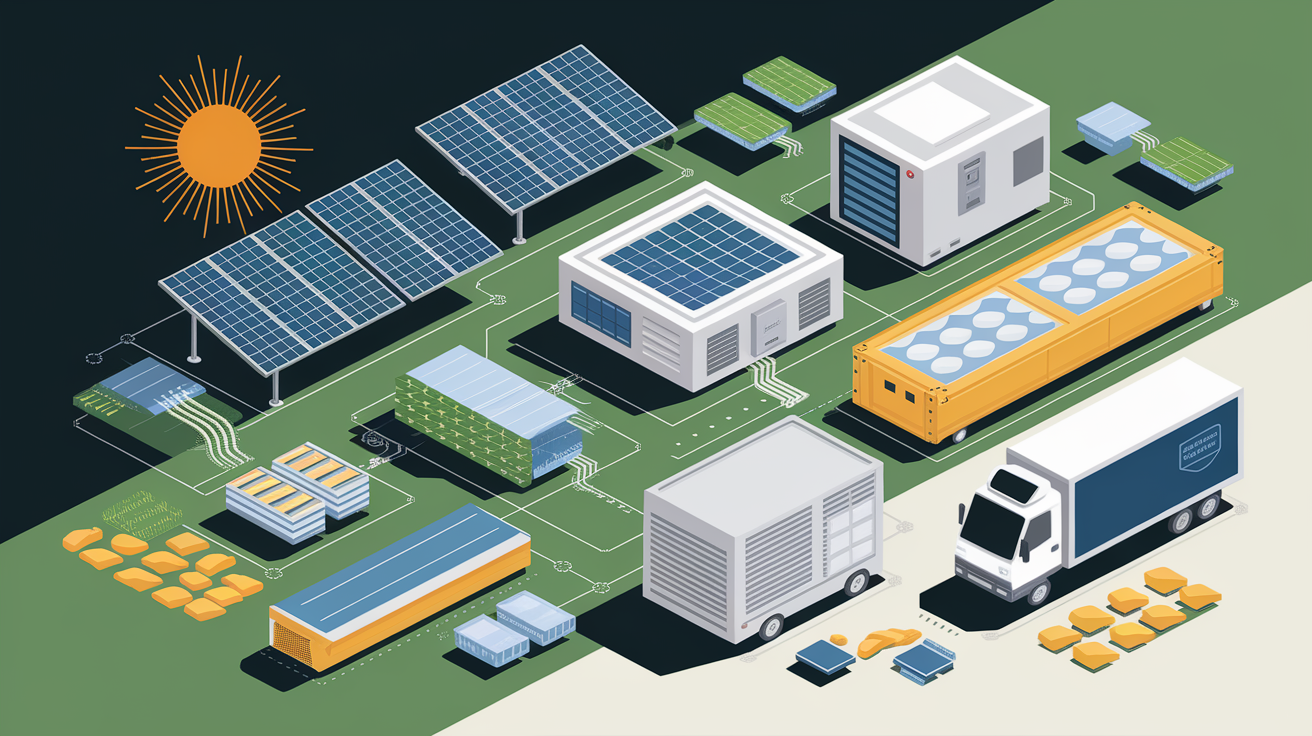Harnessing the Sun: Solar-Powered Cold Chain Logistics
Sunshine on Ice – A Bright Opening
In a logistics sector increasingly under pressure to reduce emissions and improve efficiency, solar-powered cold chain logistics are emerging as a transformative solution. By using photovoltaic systems to power refrigeration units, temperature-controlled storage and refrigerated transport can operate with dramatically lower carbon footprints, while enhancing cold chain reliability. This technology is being adopted from rural farming hubs to advanced pharmaceutical logistics operations, ensuring critical goods like vaccines and perishable foods remain at optimal temperatures without relying solely on fossil fuels. Industry research from Polaris Market Research projects strong growth in the sector through 2034, aligned with global pushes toward clean energy solutions.

Why Solar in Cold Chains?
The fusion of renewable energy with cold chain management delivers both ecological and economic wins. PowerFlex highlights substantial energy cost savings from reduced fuel and grid electricity use, while minimizing dependency on unstable power infrastructure. Solar-powered refrigeration units reduce greenhouse gas emissions and offer energy independence—a key advantage in regions with unreliable grids. For remote area logistics, systems with solar batteries and battery backup systems extend storage capacities overnight or during cloudy weather, enabling sustainable logistics without compromising cold chain reliability.

Key Components of Solar-Powered Cold Chain Systems
Modern solar-powered cold chain systems integrate a range of technologies to optimize temperature-controlled storage and transport:

- Solar panels: High-efficiency photovoltaic arrays convert sunlight to electricity for refrigeration units.
- Solar inverter systems: Manage power flow, converting DC to AC for standard refrigeration and monitoring equipment.
- Solar batteries: Store energy for off-grid refrigeration during nighttime or low-sunlight conditions.
- Temperature monitoring systems: Track internal conditions in real time, crucial for cold chain sustainability and environmental compliance.
- Climate-controlled delivery infrastructure: Includes insulated containers, solar-powered cold rooms, and mobile refrigerated trucks.
- IoT integration: Real-time supply chain optimization through predictive maintenance and energy-efficient cooling cycles.
Implementation Strategies
Deploying solar-powered cold chain solutions requires careful planning and investment. Strategies include:

- Site assessment: Evaluating solar potential for warehouses, farms, and transportation routes.
- Hybrid systems: Combining renewable energy with conventional power for redundancy.
- Modular installation: Using scalable solar cold storage facilities that can expand with demand.
- Business model innovation: Pay-for-use and leasing models, as outlined by the UNDP SDG Investor Platform, make adoption cost-effective for small-scale farmers and enterprises.
Industry experts recommend integrating solar cooling technology into new builds rather than retrofitting older systems, to maximize energy efficiency and minimize installation costs.
Overcoming Challenges
Despite its promise, solar-powered cold chain logistics must address operational and investment barriers. Weather variability can affect solar generation, making battery backup systems and hybrid designs essential. Initial capital costs remain high in some regions, although operational savings often offset them in the medium term. Technical training is critical—operators must understand how to maintain solar inverter systems and optimize temperature monitoring technologies. Regulatory standards for cold chain compliance continue to evolve, mandating consistent documentation of temperature control for pharmaceutical logistics and food preservation.
Real-World Success Stories
Case studies are proving the viability of solar-powered cold chain solutions. In India, IoT-enabled solar cold storage warehouses are helping farmers extend produce shelf life, reduce food waste, and increase profits. In the U.K., companies like Fresh Logistics operate solar-powered refrigerated trucks, cutting fuel costs and improving environmental compliance. Remote clinics in Africa have adopted solar-powered temperature-controlled shipping containers for vaccine distribution, ensuring reliable cold chain sustainability even without grid power.
The Future Looks Bright and Cold – Conclusion
As global markets demand greener, more resilient supply chains, solar-powered cold chain logistics offer a pathway to sustainable, cost-effective operations. With advances in solar energy storage, energy-efficient cooling, and IoT-driven cold chain management, these systems are poised to become mainstream in sectors ranging from agriculture to high-stakes pharmaceutical distribution. The combination of eco-friendly transportation and robust renewable energy logistics makes solar-powered refrigeration not just a technological upgrade, but a strategic investment in cold chain sustainability. The model of sunshine keeping ice intact is no longer just poetic imagery—it’s becoming the practical standard for a cleaner, colder future.







